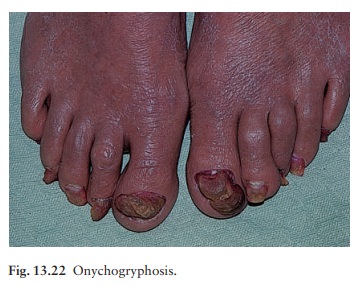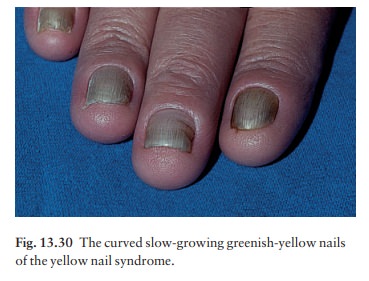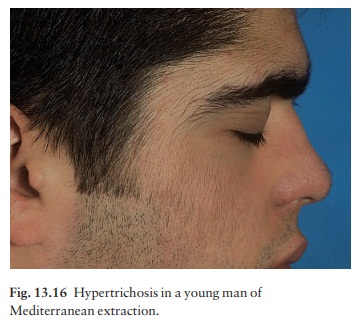Chapter: Clinical Dermatology: Regional dermatology
Some other nail abnormalities
Some
other nail abnormalities
A
few people are born with one or more nails missing. In addition there are many
conditions, either inherited or associated with chromosomal abnormalities and
usually rare, in which nail changes form a minor part of the clinical picture.
Most cannot be dealt with here.
In
the rare nail–patella
syndrome, the thumbnails, and to a lesser extent those of the
fingers, are smaller than normal. Rudimentary patellae, and renal disease iliac
spines complete the syndrome, which is inherited as an autosomal dominant trait
linked with the locus controlling ABO blood groups.
Pachyonychia
congenita is also rare and inheritedas an autosomal dominant trait.
The nails are grossly thickened, especially peripherally, and have a curious
triangular profile (Fig. 13.22). Hyperkeratosis may occur on areas of friction
on the legs and feet.

Permanent
loss of the nails may be seen with the dystrophic types of epidermolysis
bullosa.
In
the yellow
nail syndrome (Fig. 13.30) the nail changes begin in adult life, against
a background of

Peripheral oedema is usually present and pleural
effusions may occur. The nails grow very slowly and become thickened and
greenish-yellow; their surface is smooth but they are overcurved from side to
side.
The nail
‘en racquette’ is a short broad nail(Fig. 13.16), usually a thumbnail,
which is seen in some 1–2% of the population and inherited as an autosomal
dominant trait. The basic abnormality is shortness of the underlying terminal
phalanx.

Related Topics